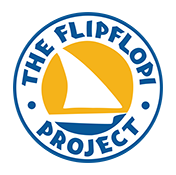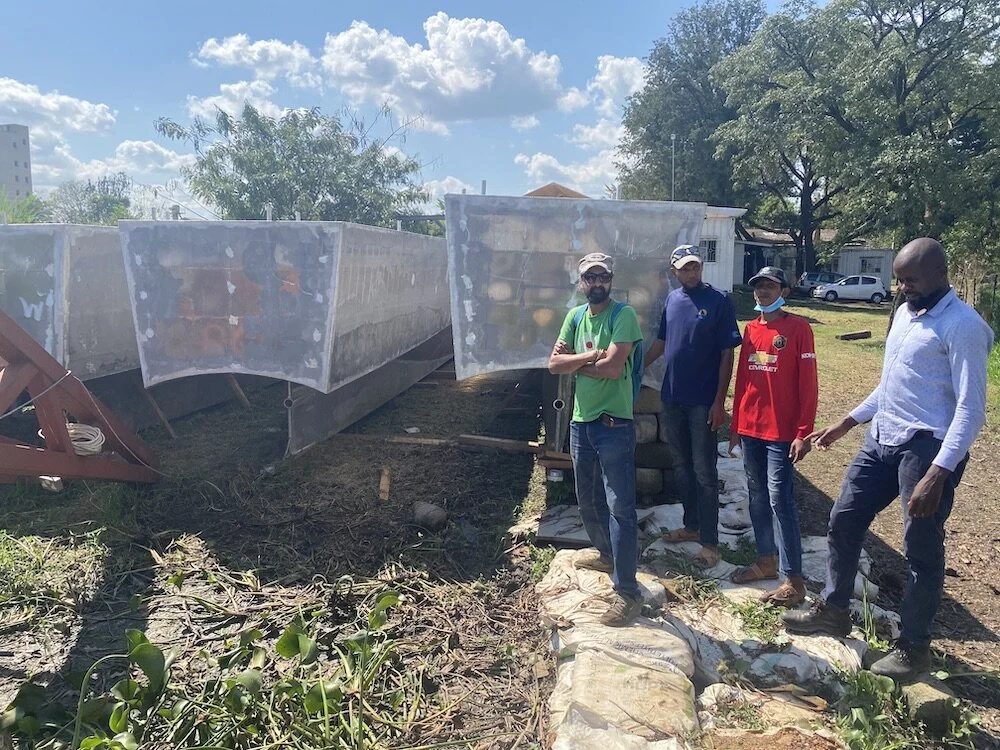Waterbus: Providing Safe, Reliable, and Comfortable Transport Around Lake Victoria
By Davina Ngei
Over the last ten years, 1.9 million people have been safely transported across the lake, including many children travelling to school
According to the National Lake Rescue Institute, an NGO launched in 2002 as a result of several major accidents and incidents on Lake Victoria, the death rate on Africa’s largest freshwater lake is estimated to be around 5,000 annually.
Waterbus builds all their boats on the shores of Lake Victoria
Violent and abrupt winds, waves and storms often crash and capsize the wooden canoes used to transport passengers, cargo and fishermen across this massive lake dotted with hundreds of islands. Coupled with poor communication and limited resources such as life jackets, it becomes apparent why CNN has termed it as the ‘world’s most dangerous lake.’
With this in mind, safe, affordable and reliable transport is crucial in order to keep communities around the lake safe, while allowing for unhindered travel, trade, and access to markets.
Today we sit down with Malcolm Ormiston and Friedrich Neser from Waterbus, to learn more about their work in providing safe, comfortable, and reliable transport around Lake Victoria.
Who is Waterbus?
We are a Kisumu based ferry operator providing safe and sustainable water transportation for everyone. The idea for the Waterbus emerged in 2005 and with support from Kenyan investors, we launched our first catamaran ferry in 2010.
Our ferries travel on existing routes to support established travel patterns, and we’ve also started new routes to cater to communities who have previously been marginalised. Right now our focus is on the Kenyan side of the lake, but we hope to expand in the near future.
Through our shipyard in Kisumu, we build our ferries to safely carry passengers and cargo, with a hull design inspired by the local wooden canoes. The long and slender hulls keep fuel consumption down and in turn keep ticket prices low. In addition, our environmentally friendly engine design leads to a significant reduction in carbon emissions and preserves air quality for passengers.
What problems are you trying to solve around Lake Victoria, and how?
The main mode of transportation on Lake Victoria is wooden canoes. These open boats take hours to make short journeys, in addition to being uncomfortable for passengers and often unsafe - the lake has hippos which can overturn the canoes as well as violent storms which capsize canoes.
Waterbus was launched with the understanding of the necessity and potential of facilitating modern boat technology that improves the mobility and safety of passengers.
Our ferries are built to modern standards - they meet international safety standards - and have the stability to cope with the unpredictable weather. The travel experience is also more comfortable, and our closed boat design means that passengers and their goods are sheltered from the weather - this also has the benefit of reducing post-harvest losses.
Waterbus currently operates in Kenyan waters but intends to expand across the entire lake region connecting Uganda and Tanzania
What are some of the challenges you’ve encountered running the Waterbus?
The centre of marine transport on Lake Victoria is in Tanzania, owing to the country’s larger population. In fact, most shipbuilding takes place in Mwanza. We train our team at our shipyard, but we still have challenges finding some of the right skill sets. Boatbuilding is high tech and you need access to the right talent to support your business.
Furthermore, the regulatory and tax environment in the country is unconducive, with inefficiencies at the port hindering our ability to operate efficiently. When we lose revenue, we become less profitable and less attractive to investors.
Also, with the lake levels rising due to recent floods, we’ve had to build jetty’s to ensure that customers do not get wet feet - this is an additional cost to us. We’ve also seen the weather becoming more unpredictable with the rise in global warming, making travel on the lake riskier. Unfortunately, the weather service does not give real-time storm warnings, which puts all transport operators on the backfoot.
Why did you decide to partner with Flipflopi for the Lake Victoria expedition?
We see the danger in polluting a critical freshwater source as well as the enormous value in being able to clear up accumulated garbage. Cleaning up the lake also means less plastic waste getting sucked into the cooling systems and wrapped around the propellers of our ferries, which has led to operational problems in the past .
Also, inspired by Flipflopi, we want to be able to use recycled HDPE to construct the floors of our ferries, as a replacement for wood.
Lastly, being able to travel around the lake alongside the Flipflopi allows communities to see that there is an alternative transport form available, and that if they reach out to us we are able to provide them with our service.
What are some of your biggest successes around Lake Victoria?
Over the last ten years, we have safely transported 1.9 million people across the lake, including many children travelling to school. We’ve also had two safe deliveries on board, as we carried pregnant women to health centres. This would have been a difficult experience for these mothers if they were using a canoe.
Furthermore, we have witnessed an increased amount of trade on the shores where we operate as the local businesses can operate more efficiently (they can rely on us to consistently show up to take them to the markets or to bring business to them in the form of passengers). In fact, we have seen a 176% positive change in people’s incomes, where the Waterbus goes.
Waterbus has allowed an increased amount of trade on the shores as local businesses can operate more efficiently
We also see increased access to marginalised communities (for example, the Ringiti and Wakula communities). Where one to two canoes used to operate, we have the Waterbus coming in regularly. And every week, we get requests from new communities to bring the Waterbus to them.
What are your goals for the future?
Our short term goals are to expand our transport services to both Uganda and Tanzania. In the mid term, we are looking to grow beyond Lake Victoria and towards the Indian Ocean, specifically, Lamu and Mombasa. In the long term, we are targeting several countries in West Africa as well as South East Asia.
We believe that safe, comfortable, reliable, and affordable transportation should be available to all.




